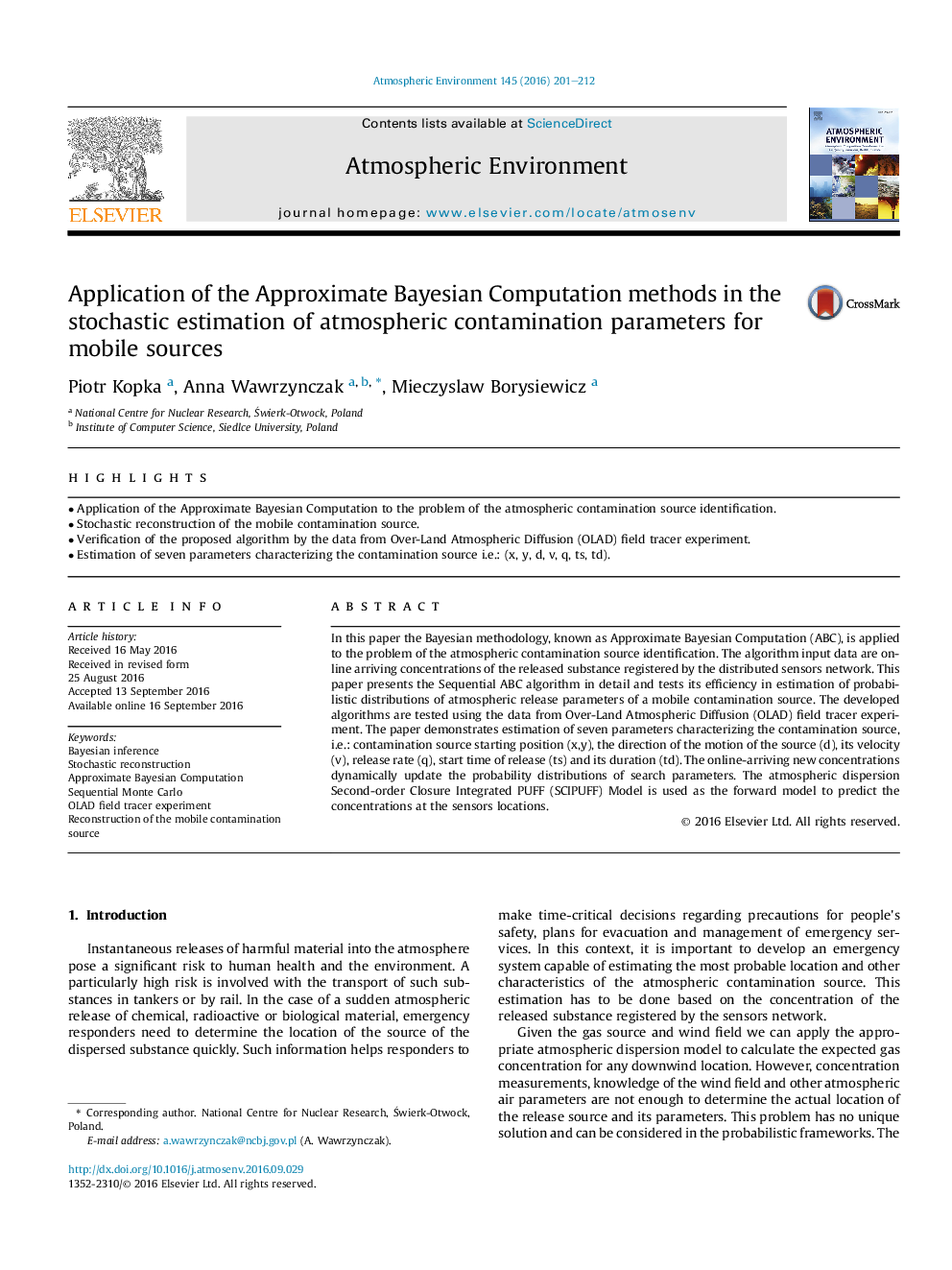| Article ID | Journal | Published Year | Pages | File Type |
|---|---|---|---|---|
| 6335843 | Atmospheric Environment | 2016 | 12 Pages |
â¢Application of the Approximate Bayesian Computation to the problem of the atmospheric contamination source identification.â¢Stochastic reconstruction of the mobile contamination source.â¢Verification of the proposed algorithm by the data from Over-Land Atmospheric Diffusion (OLAD) field tracer experiment.â¢Estimation of seven parameters characterizing the contamination source i.e.: (x, y, d, v, q, ts, td).
In this paper the Bayesian methodology, known as Approximate Bayesian Computation (ABC), is applied to the problem of the atmospheric contamination source identification. The algorithm input data are on-line arriving concentrations of the released substance registered by the distributed sensors network. This paper presents the Sequential ABC algorithm in detail and tests its efficiency in estimation of probabilistic distributions of atmospheric release parameters of a mobile contamination source. The developed algorithms are tested using the data from Over-Land Atmospheric Diffusion (OLAD) field tracer experiment. The paper demonstrates estimation of seven parameters characterizing the contamination source, i.e.: contamination source starting position (x,y), the direction of the motion of the source (d), its velocity (v), release rate (q), start time of release (ts) and its duration (td). The online-arriving new concentrations dynamically update the probability distributions of search parameters. The atmospheric dispersion Second-order Closure Integrated PUFF (SCIPUFF) Model is used as the forward model to predict the concentrations at the sensors locations.
